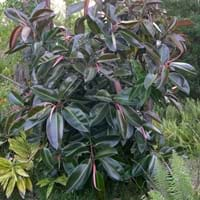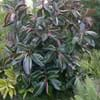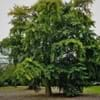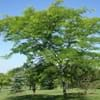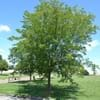Life Span
Perennial
Perennial
Origin
Southern Asia, Southeastern Asia, India, Nepal
Mediterranean
Types
not available
Green Globe, Imperial Star, Tempo, Violetto, Symphony
Number of Varieties
Not Available
Habitat
agricultural areas, Along Railroads, Coastal Regions, Forests, Roadsides, Scrubs, Suburban areas
Sandy areas
USDA Hardiness Zone
10-11
7-10
Sunset Zone
H1, H2, 16, 17, 19, 20, 21, 22, 23, 24
8, 9, 14, 15, 16, 17, 18, 19, 20, 21, 22, 23, 24
Habit
Upright/Erect
Rosette/Stemless
Flower Color
Not Available
Purple
Flower Color Modifier
Bicolor
Not Available
Fruit Color
Yellow, Yellow green
Not Available
Leaf Color in Spring
Red, Dark Green, Crimson
Gray Green, Silver
Leaf Color in Summer
Red, Dark Green, Crimson
Gray Green, Silver
Leaf Color in Fall
Red, Dark Green, Crimson
Gray Green, Silver
Leaf Color in Winter
Red, Dark Green, Crimson
Not Available
Leaf Shape
Elliptic to oblong
Glandular
Plant Season
Spring, Summer, Fall, Winter
Spring
Sunlight
Full Sun, Partial Sun, Partial shade
Partial shade
Type of Soil
Loam, Sand
Well drained
The pH of Soil
Acidic, Neutral, Alkaline
Slightly Acidic
Soil Drainage
Well drained
Well drained
Bloom Time
Not Available
Early Fall, Fall
Tolerances
Not Available
Drought
Where to Plant?
Ground
Ground
How to Plant?
Seedlings, Vegetative Reproduction
Seedlings, Transplanting
Plant Maintenance
Medium
Medium
Watering Requirements
Keep ground moist, Requires a lot of watering
Form a Soil ring to water efficiently, Needs watering once a week, Water twice a day in the initial period
In Summer
Lots of watering
Lots of watering
In Spring
Moderate
Moderate
In Winter
Average Water
Average Water
Soil pH
Acidic, Neutral, Alkaline
Slightly Acidic
Soil Type
Loam, Sand
Well drained
Soil Drainage Capacity
Well drained
Well drained
Sun Exposure
Full Sun, Partial Sun, Partial shade
Partial shade
Pruning
Prune for shortening long shoots
No pruning needed in the early stages, Prune after flowering, Remove deadheads
Fertilizers
don't fertilize in winter
All-Purpose Liquid Fertilizer
Pests and Diseases
Mealybugs, Red blotch, Scale, Spider mites, Yellow Leaves
Aphids, Gray mold, Powdery mildew, Root rot
Plant Tolerance
Not Available
Drought
Flowers
Insignificant
Yes
Flower Petal Number
Not Available
Not Available
Fragrant Leaf
No
Not Available
Foliage Texture
Bold
Coarse
Foliage Sheen
Glossy
Matte
Attracts
Not Available
Butterflies
Allergy
Asthma, breathing problems
Intestinal gas
Aesthetic Uses
Showy Purposes
Not Used For Aesthetic Purpose
Beauty Benefits
Not Available
Not Available
Environmental Uses
Air purification, soil erosion prevension on hill slopes
Air purification
Medicinal Uses
Not Available
Anemia, High cholestrol, Kidney problems, Liver problems
Part of Plant Used
Latex
Flowers, Fruits
Other Uses
Making rubber, Making tyres
Can be made into a herbal tea, Used as primary flavor in Italian Liqours
Used As Indoor Plant
Yes
No
Used As Outdoor Plant
Yes
Yes
Garden Design
Container, Feature Plant, Houseplant, Shade Trees, Tropical
Not Available
Botanical Name
FICUS elastica
Cynara cardunculus
Common Name
Rubber Plant
Artichoke
In Hindi
रबड़ का पौधा
Artichoke
In German
Ficus elastica
Artischocke
In French
Ficus elastica
Artichaut
In Spanish
ficus
Alcachofa
In Greek
ελαστικός φίκος
αγκινάρα
In Portuguese
fábrica de borracha
Alcachofra
In Polish
gumy roślin
Karczoch
In Latin
Flexilis herba
cactus
Phylum
Tracheophyta
Anthophyta
Class
Magnoliopsida
Eudicotyledones
Family
Moraceae
Asteraceae
Clade
Angiosperms, Eudicots, Rosids
Not Available
Subfamily
Not Available
Not Available
Number of Species
Not Available
Not Available
Importance of Ficus Elastica and Artichoke
Want to have the most appropriate plant for your garden? You might want to know the importance of Ficus Elastica and Artichoke. Basically, these two plants vary in many aspects. Compare Ficus Elastica and Artichoke as they differ in many characteristics such as their life, care, benefits, facts, etc. Every gardener must at least have the slightest clue about the plants he wants to plant in his garden. Compare their benefits, which differ in many ways like facts and uses. The medicinal use of Ficus Elastica is Not Available whereas of Artichoke is Anemia, High cholestrol, Kidney problems and Liver problems. Ficus Elastica has beauty benefits as follows: Not Available while Artichoke has beauty benefits as follows: Not Available.
Compare Facts of Ficus Elastica vs Artichoke
How to choose the best garden plant for your garden depending upon its facts? Here garden plant comparison will help you to solve this query. Compare the facts of Ficus Elastica vs Artichoke and know which one to choose. As garden plants have benefits and other uses, allergy is also a major drawback of plants for some people. Allergic reactions of Ficus Elastica are Asthma and breathing problems whereas of Artichoke have Intestinal gas respectively. Having a fruit bearing plant in your garden can be a plus point of your garden. Ficus Elastica has no showy fruits and Artichoke has no showy fruits. Also Ficus Elastica is not flowering and Artichoke is flowering. You can compare Ficus Elastica and Artichoke facts and facts of other plants too.
